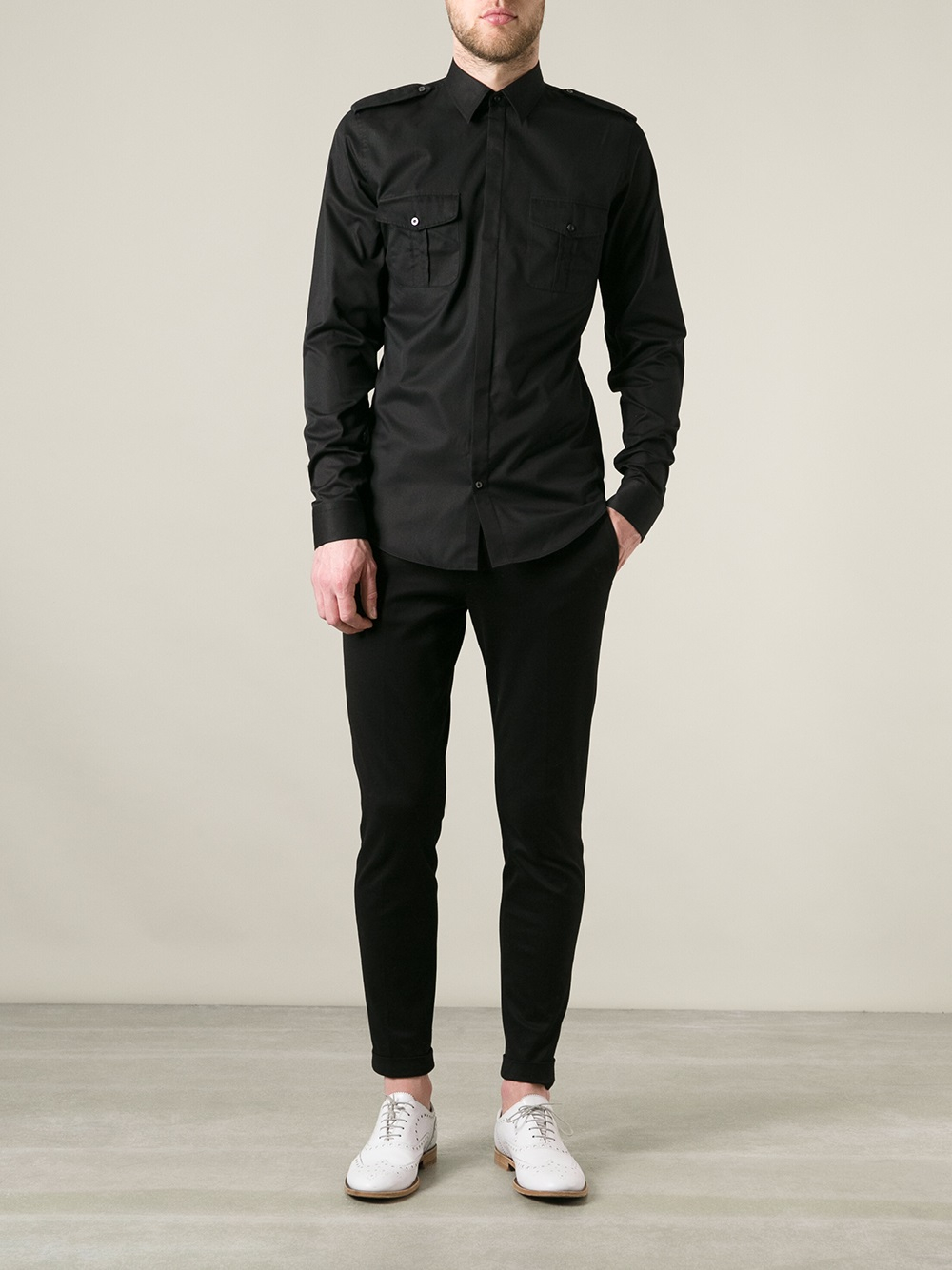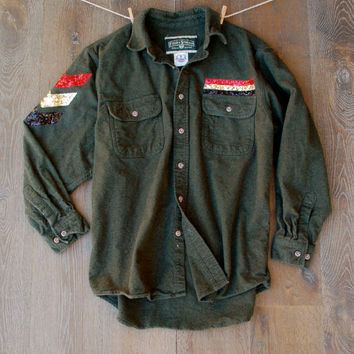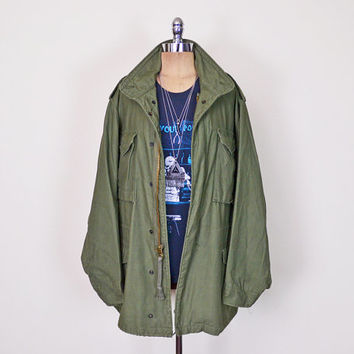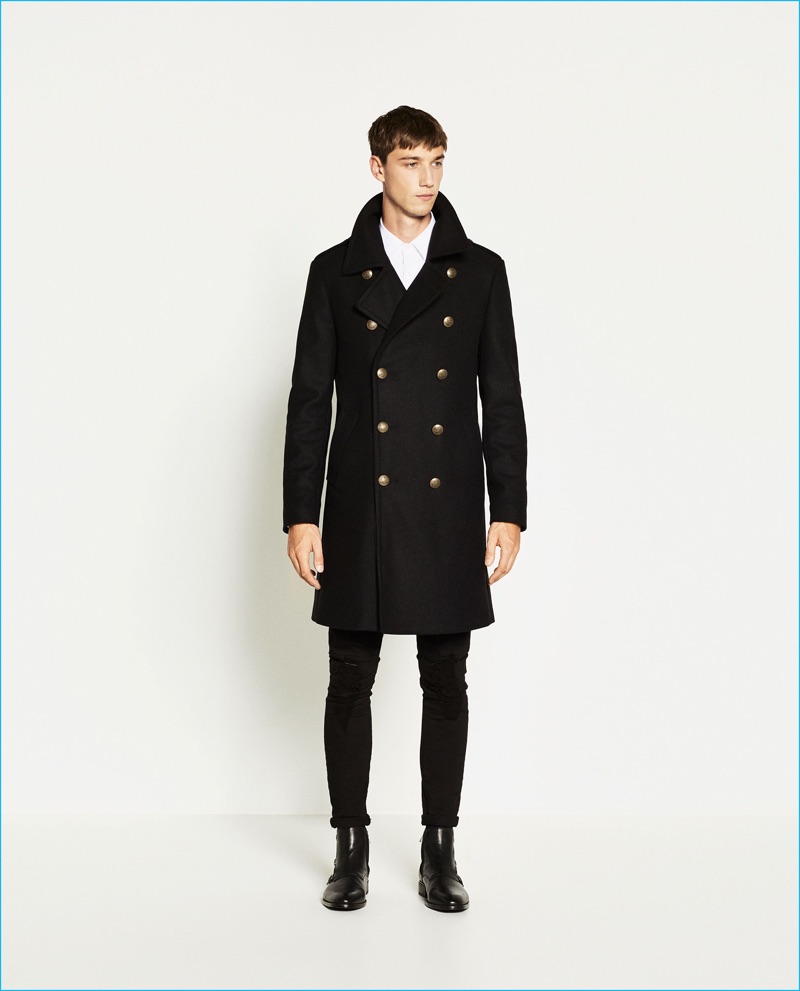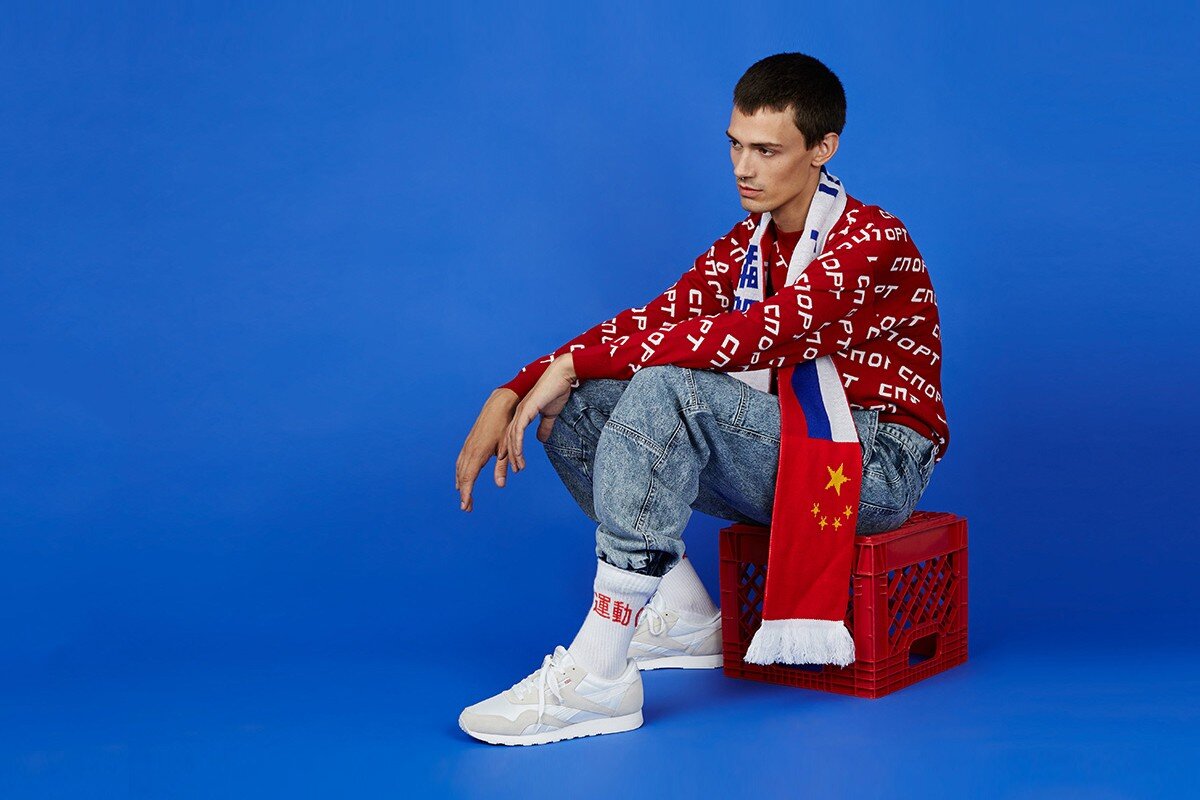An Intersection of Fashion and Function: Military Style
If one were to have to definitively choose a single design element that has been the most pervasive throughout all of fashion, a safe choice would surely be military style. It is constantly re-evaluated from viewpoints ranging from purely field-function oriented approaches (such as those taken by governments in effectively equipping their ground forces), to visions concerned less with function and more with the aesthetic connotations that functional design and military apparel carry. This continuous re-interpretation has created a powerful omnipresence in fashion, from grunge to Gucci.
Above (Left to Right): Military Shirt by Gucci, An example of a grunge-style military shirt (taken from Wanelo), Another instance of a military-inspired grunge look (taken from Wanelo), Military Coat by Zara.
I find this particularly fascinating--that is, how military style can have so many interpretations and redesigns, yet still retain a focus on certain functional qualities (or emulation of said function). For example, the strong, sturdy look of military apparel naturally lends itself to components of high-fashion and couture. Yet this quality of high structural integrity has also been adopted by grunge and skate culture for its damage-resistant fabric, cost-effectiveness (think: military surplus stores), and abundance of pockets--not to mention the great baggy, nonchalant look one can get out of an oversized, unbuttoned canvas shirt.
Above: Jonathan Lim wearing Kishin Kato's "Masculine Aggression" from the collection "Hypermasculinity". Photograph by Camelia Malkami.
This look at the pervasiveness that function has given to military style brings us to the clever and thoughtful designs of Kishin Kato, which were recently featured at MODA’s 2017 Winter Show. In the collection titled “Hypermasculinity,” Kato invokes an intense emphasis on physicality through what could be seen as hyper-functionality. A detail from the collection that highlights such extreme effectiveness is taken from Kato’s own description of the second look called “Masculine Aggression:"
“The jacket is fully compatible with the MOLLE system used to attach police and military equipment to the garment--excessive implementation of the system creates an absurd capacity for tactical use. The zig-zag zipper featured on the front symbolizes boldness and emphasizes the padded panel on the front right of the garment. Attached to the MOLLE webbing are two molotov cocktails made from beer bottles; violence and beer being typical elements of hyper-masculine identity.”
As one can see, functionalism in this interpretation of military style is reflected by an emphasis of the external over internal. The look is heavily concerned with how it is able to affect its surroundings in a lasting and potentially damaging manner. Notably, the collection features several function-oriented design elements that have also become prevalent in streetwear such as paneling and pants cuffed below the knee to allow simultaneous freedom of movement and a clean profile. Such concepts are insightfully explored throughout the rest of the collection, and it is because of this insight that I strongly recommend anyone interested in “Hypermasculinity” keep an eye out for Kato’s work.
"Hypermasculinity" by Kishin Kato. Left to Right: Rayen Wang, Jonathan Lim and Kaela Bynoe modeling looks from Kishin's collection. Photograph by Kwambata Ngatia.
Feature image via


